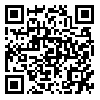Volume 22, Issue 66 (9-2022)
jgs 2022, 22(66): 171-189 |
Back to browse issues page
Download citation:
BibTeX | RIS | EndNote | Medlars | ProCite | Reference Manager | RefWorks
Send citation to:



BibTeX | RIS | EndNote | Medlars | ProCite | Reference Manager | RefWorks
Send citation to:
Haji K, Esmali-Ouri A, Mostafazadeh R, Nazarnejad H. (2022). Assessment of land cover/land use changes using object-oriented processing of satellite imageries (1985-2015) in the Rozechai Watershed of Urmia. jgs. 22(66), 171-189. doi:10.52547/jgs.22.66.171
URL: http://jgs.khu.ac.ir/article-1-3393-en.html
URL: http://jgs.khu.ac.ir/article-1-3393-en.html
1- M.Sc Student of Watershed Engineering, Faculty of Agricultural and Natural Resources University of Mohaghegh Ardabili, M.Sc Student of Watershed Engineering, Faculty of Agricultural and Natural Resources
2- Associate Professor, Department of Natural Resources, Faculty of Agriculture and Natural Resources University of Mohaghegh Ardabili, Associate Professor, Department of Natural Resources, Faculty of Agriculture and Natural Resources
3- Assistant Professor, Department of Natural Resources, Faculty of Agriculture and Natural Resources University of Mohaghegh Ardabili, Assistant Professor, Department of Natural Resources, Faculty of Agriculture and Natural Resources ,raoofmostafazadeh@uma.ac.ir
4- Assistant Professor, Department of Range and Watershed Management, Faculty Natural Resources Urmia University, Assistant Professor, Department of Range and Watershed Management, Faculty Natural Resources
2- Associate Professor, Department of Natural Resources, Faculty of Agriculture and Natural Resources University of Mohaghegh Ardabili, Associate Professor, Department of Natural Resources, Faculty of Agriculture and Natural Resources
3- Assistant Professor, Department of Natural Resources, Faculty of Agriculture and Natural Resources University of Mohaghegh Ardabili, Assistant Professor, Department of Natural Resources, Faculty of Agriculture and Natural Resources ,
4- Assistant Professor, Department of Range and Watershed Management, Faculty Natural Resources Urmia University, Assistant Professor, Department of Range and Watershed Management, Faculty Natural Resources
Abstract: (7759 Views)
Also, because of human activities and natural phenomena, the face of the earth has always undergone a change. Therefore, for optimal management of natural areas, awareness of the ratio of land cover/land use changes is a necessity. Therefore, extraction of land use maps as the most important goal in the management of the natural resource can be considered. The purpose of the present study was to evaluate land cover/ land use changes at the Rozechai Watershed during the period of 30-years 1985-2015 using Landsat 5 and Landsat 7 satellite imageries such as TM and ETM+ sensors; plus, land use maps were prepared using TerrSet software and object-oriented classification in 1985 and 2000 years. As well as the land use map of procurement by the geographical organization in 2015 has been used. The results show that rangelands level has the highest percentage among all land use types during the period of 30 years, but between 1985 and 2000, and 2000 to 2015, the level of rangelands has a decreasing trend indicating the destruction trend in the region of the replacement of moderate- poor rangelands and good rangeland by dry farming. Also, the tables of obtained from the error matrix indicate that the observed values in the diameter of the error matrix are much larger than the values outside the diameters. Thus, the overall accuracy for the years 1985, 2000, and 2015 were 97, 90 and 96 percent, and The values of Kappa index were 91%, 84% and 94% respectively, indicating a high degree of accuracy in the object-oriented approach to classification.
Type of Study: Research |
Send email to the article author
| Rights and permissions | |
 |
This work is licensed under a Creative Commons Attribution-NonCommercial 4.0 International License. |

This work is licensed under a Creative Commons — Attribution-NonCommercial 4.0 International (CC BY-NC 4.0)






